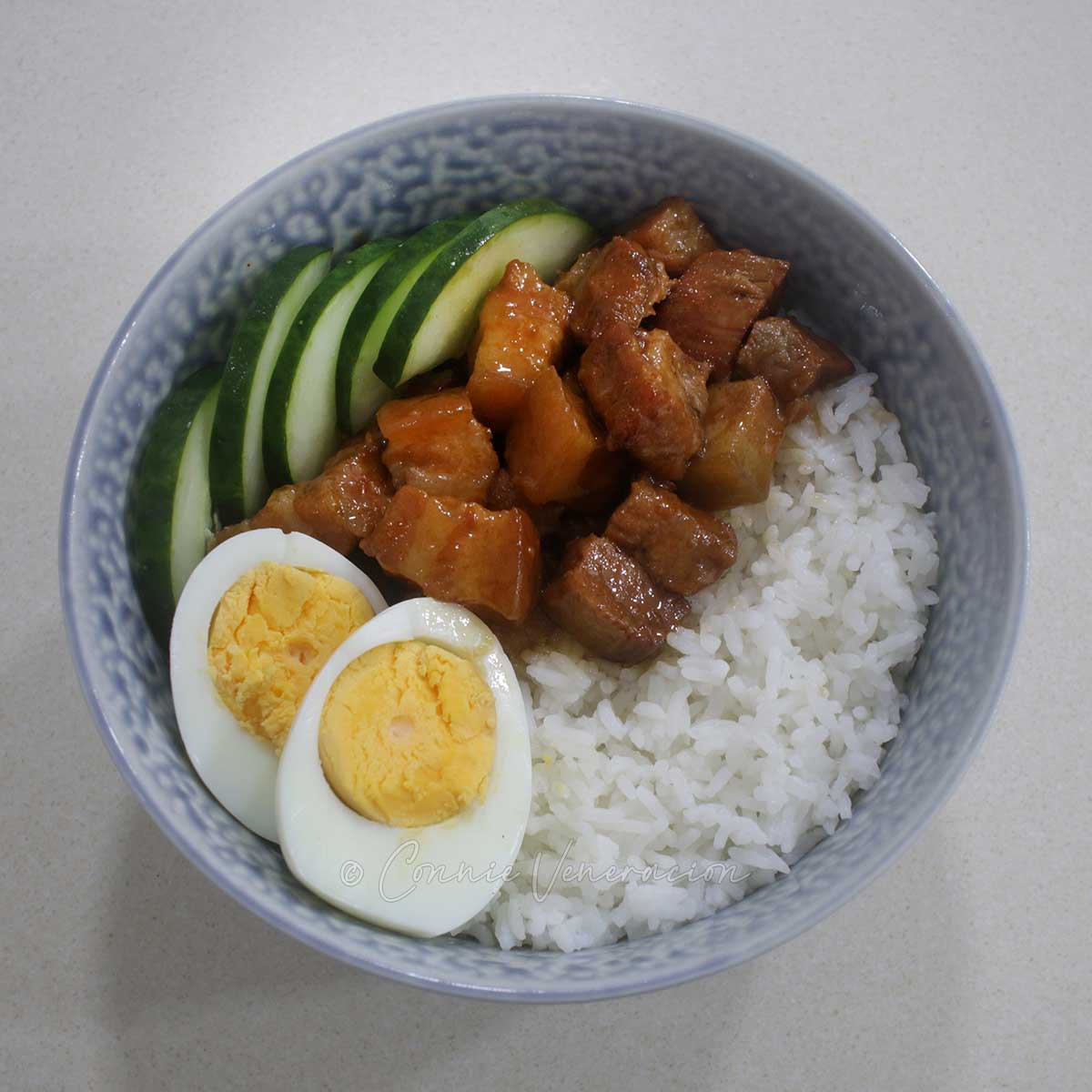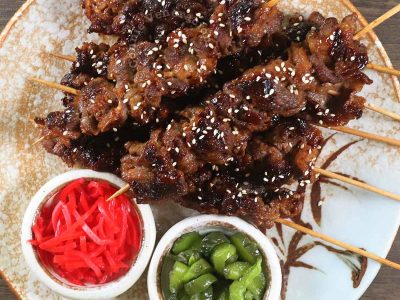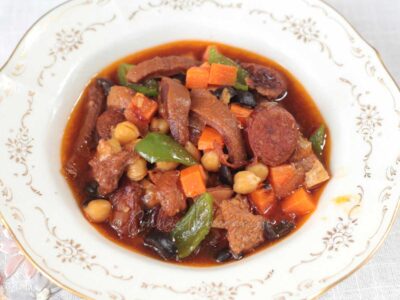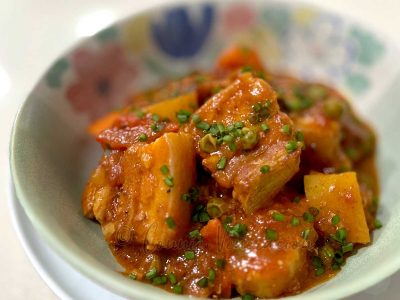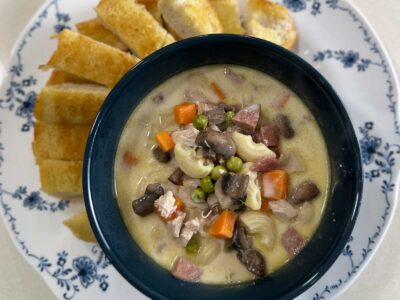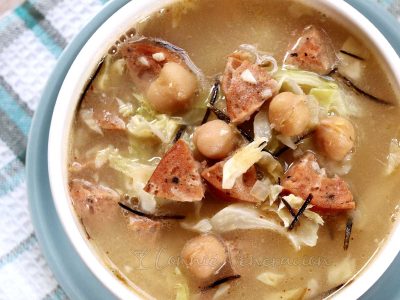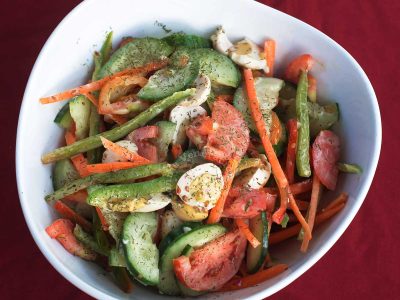I’ve heard many Filipinos describe binagoongang baboy as pork adobo with bagoong (shrimp paste) added in. It isn’t. If that’s how you cook your binagoongang baboy, it will be way too salty.
The better way to cook this dish is to treat the bagoong as the salty component. It isn’t an ingredient that’s added when the meat is done to coat it like an afterthought.
The smarter technique is to add the bagoong to the meat before the braising even begins. That way, as the meat cooks, it absorbs an array of flavors from the spices, the vinegar, the bagoong and the scant amount of sugar to cut through the acidity and saltiness.
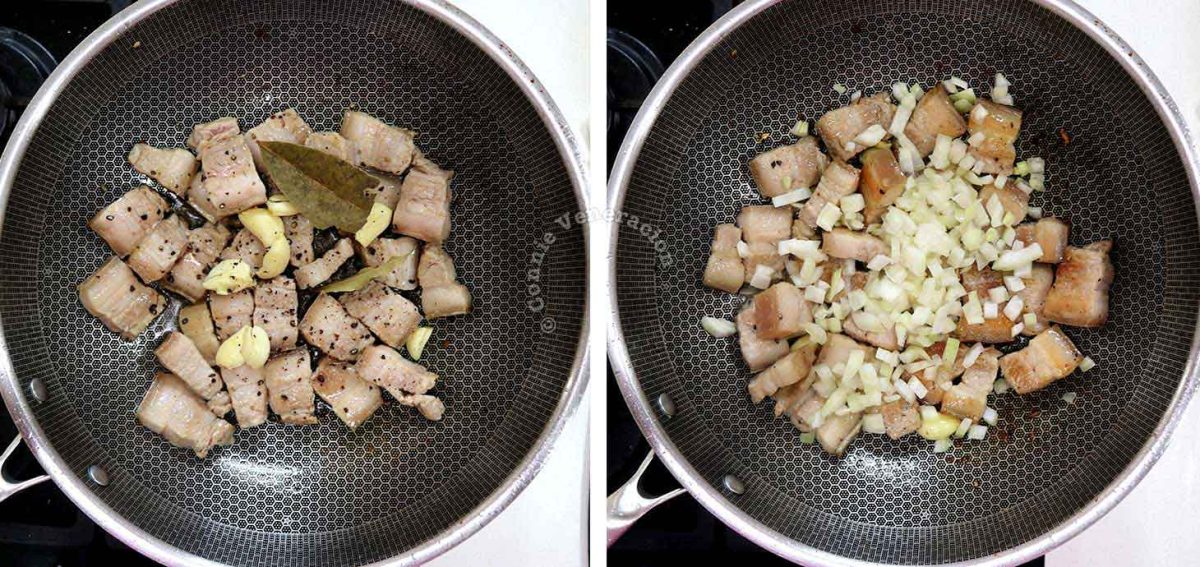
Start by browning pork cubes in a little oil. Not only does this stage add flavor to the meat, browning gives the pork better texture too. Once browned, add the “usual” adobo ingredients. Garlic, pepper and bay leaf. Unlike adobo, we’re adding chopped onion too.
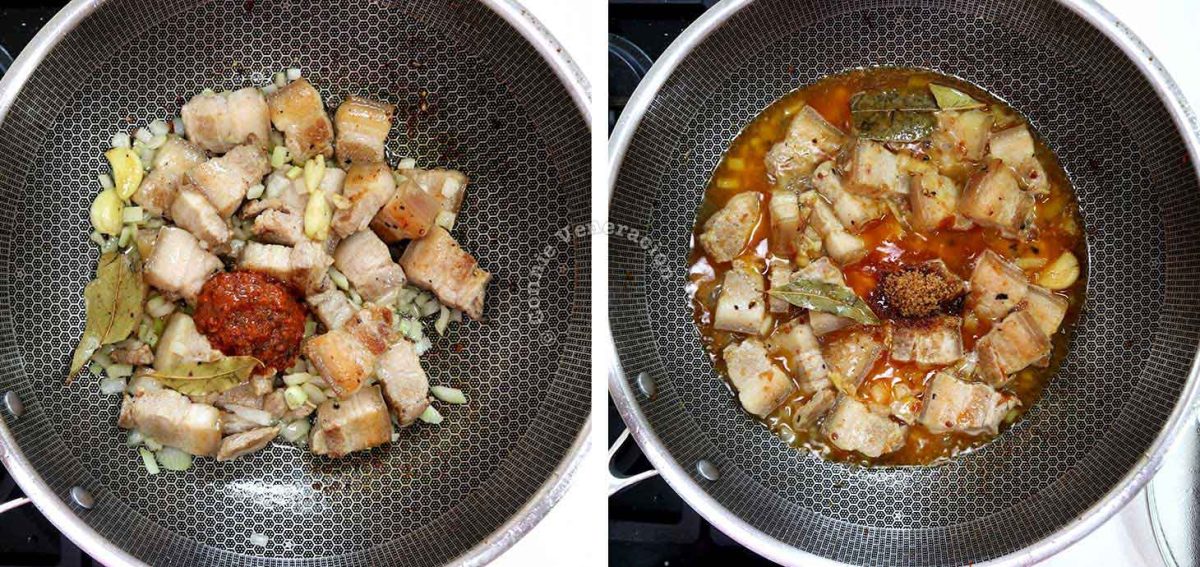
Pour in vinegar, leave until fully absorbed by the meat then add shrimp paste, sugar to balance the flavor and broth. Then, just simmer until the pork is tender.
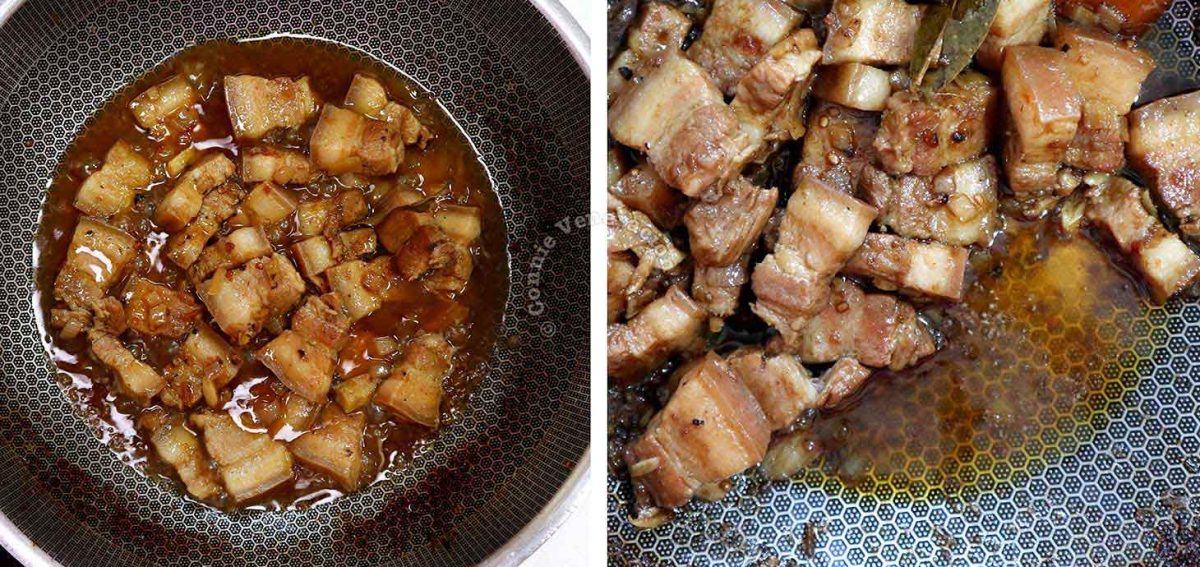
Stir occasionally and scrape the bottom of the pan to make sure no scorching occurs. If the mixture dries up before the meat is done, pour in more broth, no more than half a cup each time, to make sure that the dish does not turn out soupy by the time it’s done.
Your binagoongang baboy is ready when the liquid has been absorbed and the pork is swimming in a pool of highly flavorful fat.
Pork braised in shrimp sauce (binagoongang baboy)
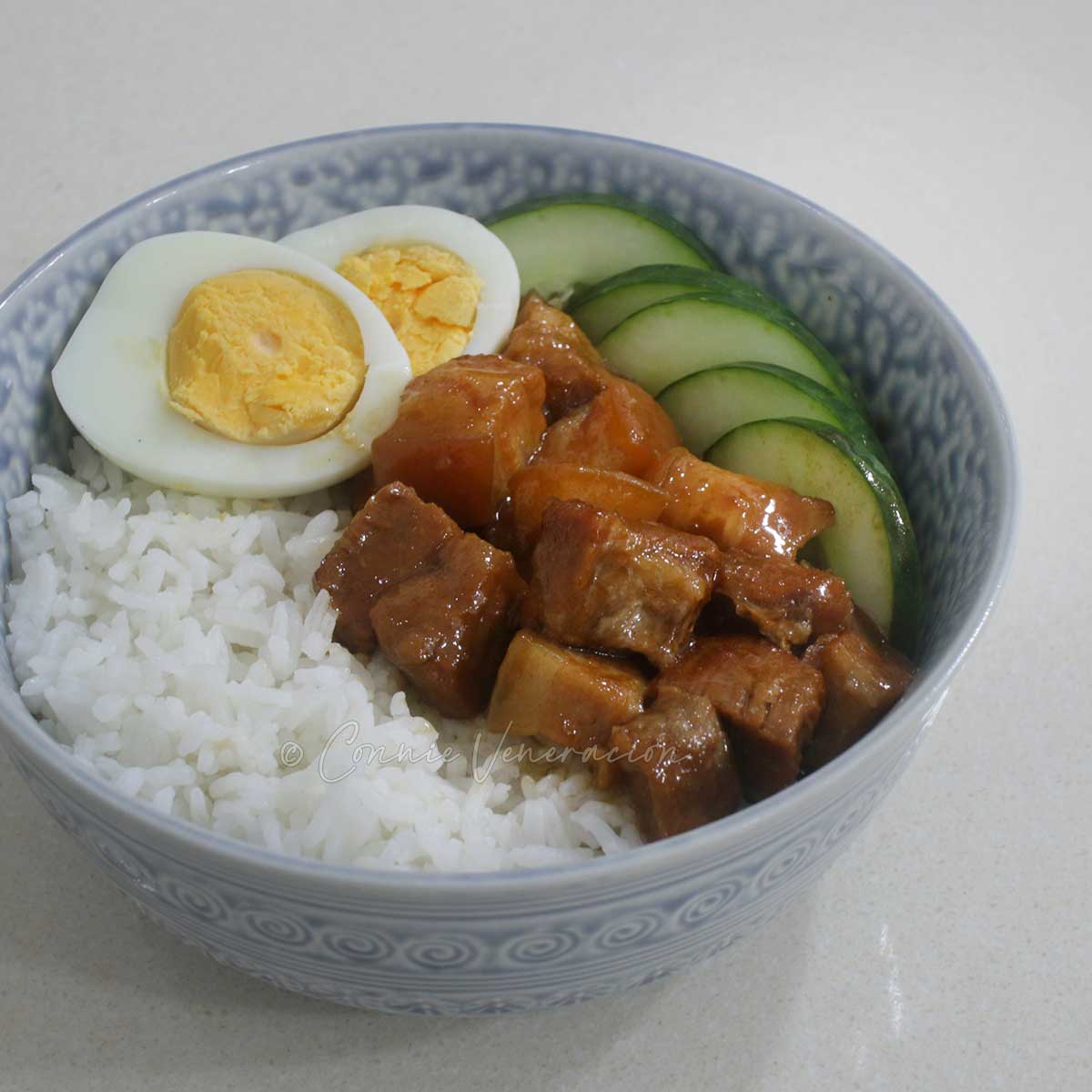
Ingredients
- 1 tablespoon cooking oil
- 800 grams pork belly cut into cubes
- 6 cloves garlic peeled and smashed
- ½ teaspoon coarsely ground black pepper
- 2 bay leaves
- 1 onion peeled and chopped
- ¼ cup vinegar
- 2 tablespoons shrimp paste
- 1 teaspoon sugar
- 2 cups bone broth you may need more
Instructions
- Heat the cooking oil in a thick-bottomed pan.
- Spread the pork belly cubes in the hot oil and leave to brown the undersides for a few minutes.
- Flip the pork cubes over to brown the opposite sides.
- Add the garlic, pepper and bay leaves. Cook, tossing, for half a minute.
- Add the onion. Cook, stirring often, until the onion pieces soften a bit.
- Pour in the vinegar. Cook, uncovered with occasional stirring, until the vinegar has been soaked up by the meat.
- Add the shrimp paste, sugar and two cups of broth.
- Lower the heat, cover the pan and simmer until the pork is tender.

